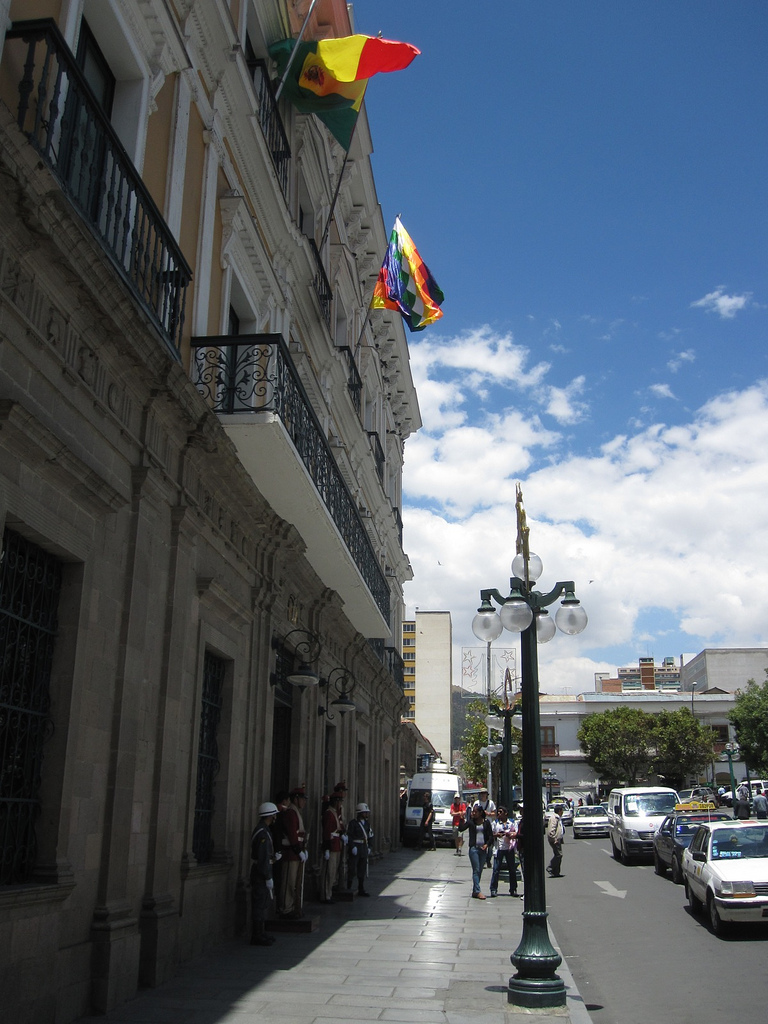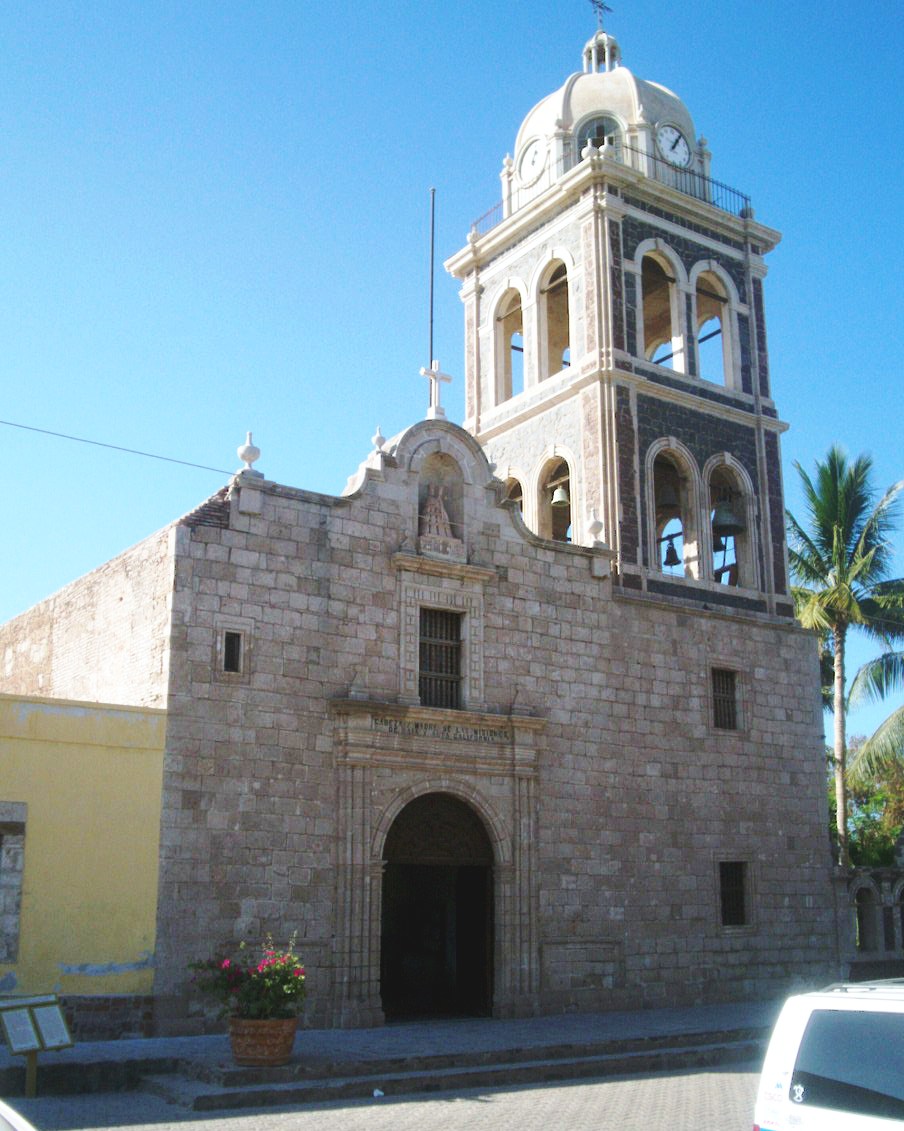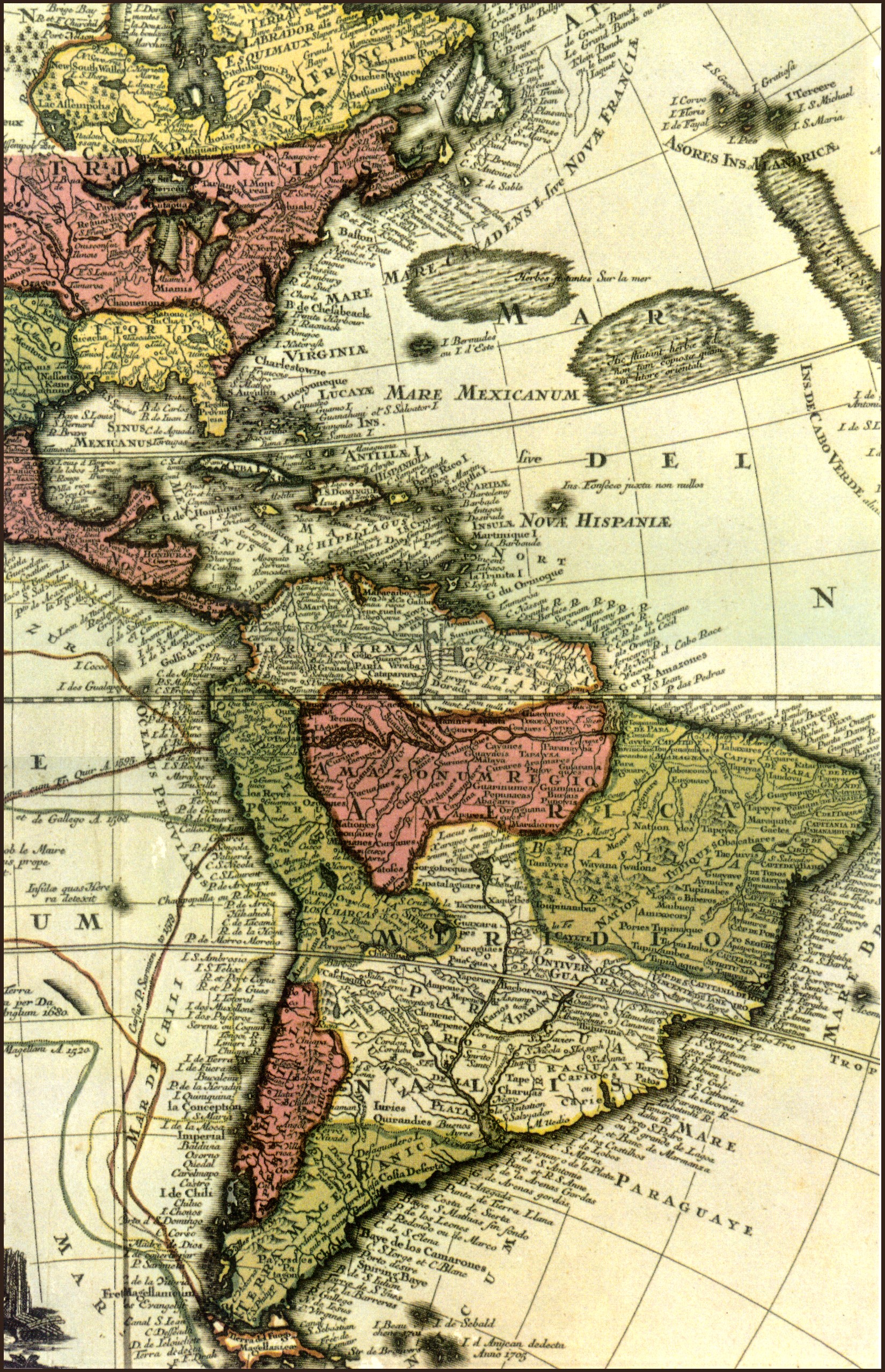|
San José De Chiquitos
San José de Chiquitos or simply San José is the capital of Chiquitos Province in the Santa Cruz Department, Bolivia. It is known as part of the ''Jesuit Missions of the Chiquitos'', which is declared in 1990 a World Heritage Site, as a former Jesuit Reduction. The ruins of the mission of San Juan Bautista, one of the Jesuit Missions of the Chiquitos, lie near the village of San Juan de Taperas in San José de Chiquitos Municipality. History In 1698, the mission of San José was founded by Jesuit missionaries Felipe Suárez and Fr. Dionisio Ávila. The mission hosted the Penoqui Indians. Languages Today, Camba Spanish is the most commonly used everyday language. In the past, the Penoqui dialect of Chiquitano was spoken at the mission of San José de Chiquitos. See also * List of Jesuit sites This list includes past and present buildings, facilities and institutions associated with the Society of Jesus. In each country, sites are listed in chronological orde ... [...More Info...] [...Related Items...] OR: [Wikipedia] [Google] [Baidu] |
Flag Of Bolivia
The flag of Bolivia is the national flag of the Bolivia, Plurinational State of Bolivia. It was originally adopted in 1851. The state and war flag is a horizontal tricolour (flag), tricolor of red, yellow and green with the Coat of Arms of Bolivia, Bolivian coat of arms in the center. According to one source, the red stands for Bolivia's brave soldiers, while the green symbolizes soil fertility, fertility and yellow the nation's mineral deposits. Since 2009 the Wiphala also holds the status of ''dual flag'' in the country. According to the revised Constitution of Bolivia of 2009, the Wiphala is considered a national symbol of Bolivia (along with the flag, national anthem, Coat of arms of Bolivia, coat of arms, the cockade; Cantua buxifolia, kantuta flower and patujú flower). Despite its landlocked status, Bolivia has a naval ensign used by navy vessels on rivers and lakes. It consists of a blue field with the state flag in the Flag terminology, canton bordered by nine small y ... [...More Info...] [...Related Items...] OR: [Wikipedia] [Google] [Baidu] |
World Heritage Site
A World Heritage Site is a landmark or area with legal protection by an international convention administered by the United Nations Educational, Scientific and Cultural Organization (UNESCO). World Heritage Sites are designated by UNESCO for having cultural, historical, scientific or other form of significance. The sites are judged to contain " cultural and natural heritage around the world considered to be of outstanding value to humanity". To be selected, a World Heritage Site must be a somehow unique landmark which is geographically and historically identifiable and has special cultural or physical significance. For example, World Heritage Sites might be ancient ruins or historical structures, buildings, cities, deserts, forests, islands, lakes, monuments, mountains, or wilderness areas. A World Heritage Site may signify a remarkable accomplishment of humanity, and serve as evidence of our intellectual history on the planet, or it might be a place of great natural beauty. A ... [...More Info...] [...Related Items...] OR: [Wikipedia] [Google] [Baidu] |
Populated Places In Santa Cruz Department (Bolivia)
Population typically refers to the number of people in a single area, whether it be a city or town, region, country, continent, or the world. Governments typically quantify the size of the resident population within their jurisdiction using a census, a process of collecting, analysing, compiling, and publishing data regarding a population. Perspectives of various disciplines Social sciences In sociology and population geography, population refers to a group of human beings with some predefined criterion in common, such as location, race, ethnicity, nationality, or religion. Demography is a social science which entails the statistical study of populations. Ecology In ecology, a population is a group of organisms of the same species who inhabit the same particular geographical area and are capable of interbreeding. The area of a sexual population is the area where inter-breeding is possible between any pair within the area and more probable than cross-breeding with in ... [...More Info...] [...Related Items...] OR: [Wikipedia] [Google] [Baidu] |
List Of The Jesuit Missions Of Chiquitos
The following table summarizes the history of foundings and relocations of the Jesuit Missions of Chiquitos. See also * Chiquitano language#Historical subgroups * Jesuit Missions of Moxos Notes References {{DEFAULTSORT:List Of The Jesuit Missions Of Chiquitos * Spanish missions in Bolivia Jesuit missions Jesuit history in South America Lists of populated places Buildings and structures in Santa Cruz Department (Bolivia) 18th-century religious buildings and structures 18th century in the Viceroyalty of Peru Tourist attractions in Santa Cruz Department (Bolivia) World Heritage Sites in Bolivia ... [...More Info...] [...Related Items...] OR: [Wikipedia] [Google] [Baidu] |
List Of Jesuit Sites
This list includes past and present buildings, facilities and institutions associated with the Society of Jesus. In each country, sites are listed in chronological order of start of Jesuit association. Nearly all these sites have been managed or maintained by Jesuits at some point of time since the Society's founding in the 16th century, with indication of the relevant period in parentheses; the few exceptions are sites associated with particularly significant episodes of Jesuit history, such as the Martyrium of Saint Denis, Montmartre, Martyrium of Saint Denis in Paris, site of the original Jesuit vow on . The Jesuits have built many new colleges and churches over the centuries, for which the start date indicated is generally the start of the project (e.g. invitation or grant from a local ruler) rather than the opening of the institution which often happened several years later. The Jesuits also occasionally took over a pre-existing institution and/or building, for ex ... [...More Info...] [...Related Items...] OR: [Wikipedia] [Google] [Baidu] |
Chiquitano Language
Chiquitano (also ''Bésɨro'' or ''Tarapecosi'') is an indigenous language isolate spoken in the central region of Santa Cruz Department of eastern Bolivia and the state of Mato Grosso in Brazil. Classification Chiquitano is usually considered to be a language isolate. Joseph Greenberg linked it to the Macro-Jê languages in his proposal, but the results of his study have been later questioned due to methodological flaws. Kaufman (1994) suggests a relationship with the Bororoan languages. Adelaar (2008) classifies Chiquitano as a Macro-Jê language, while Nikulin (2020) suggests that Chiquitano is rather a sister of Macro-Jê.Nikulin, Andrey. 2020. Proto-Macro-Jê: um estudo reconstrutivo'. Doctoral dissertation, University of Brasília. Varieties Mason (1950) Mason (1950) lists: ;Chiquito *North (Chiquito) **Manasí (Manacica) **Penoki (Penokikia) **Pinyoca; Kusikia **Tao; Tabiica *Churapa Loukotka (1968) According to Čestmír Loukotka (1968), dialects were ''Tao (Yún ... [...More Info...] [...Related Items...] OR: [Wikipedia] [Google] [Baidu] |
Camba
Camba is a word historically used in Bolivia to refer to the indigenous population in the eastern tropical region of the country, or to those born in the area of Santa Cruz, Beni, and Pando. Nowadays, the term "Camba" is used predominantly to refer to eastern Bolivian populations of mixed Spanish, Chane, and other indigenous Amazonian descent born in the eastern lowlands in and around Santa Cruz de la Sierra. Colla people, who are the population that lives in Western Bolivia, have always been in conflict with Camba people due to their different customs, behavior and appearance. Therefore, it may be common to hear Camba people use the term "Colla" as a swear word or to insult the Western population as such as it is possible to hear Collas curse on cambas. Camba may also be used as a colloquial term for "person", as in "Who is that person?" translated to "¿Quien es ese camba?" (ignores the ethnicity of the subject and does not change depending on gender as most Spanish nouns d ... [...More Info...] [...Related Items...] OR: [Wikipedia] [Google] [Baidu] |
Penoqui Language
Chiquitano (also ''Bésɨro'' or ''Tarapecosi'') is an indigenous language isolate spoken in the central region of Santa Cruz Department of eastern Bolivia and the state of Mato Grosso in Brazil. Classification Chiquitano is usually considered to be a language isolate. Joseph Greenberg linked it to the Macro-Jê languages in his proposal, but the results of his study have been later questioned due to methodological flaws. Kaufman (1994) suggests a relationship with the Bororoan languages. Adelaar (2008) classifies Chiquitano as a Macro-Jê language, while Nikulin (2020) suggests that Chiquitano is rather a sister of Macro-Jê.Nikulin, Andrey. 2020. Proto-Macro-Jê: um estudo reconstrutivo'. Doctoral dissertation, University of Brasília. Varieties Mason (1950) Mason (1950) lists: ;Chiquito *North (Chiquito) **Manasí (Manacica) **Penoki (Penokikia) **Pinyoca; Kusikia **Tao; Tabiica *Churapa Loukotka (1968) According to Čestmír Loukotka (1968), dialects were ''Tao (Y ... [...More Info...] [...Related Items...] OR: [Wikipedia] [Google] [Baidu] |
San Juan De Taperas
San Juan de Taperas is a village in San José de Chiquitos Municipality in Chiquitos Province, Santa Cruz Department, Bolivia. The ruins of the mission of San Juan Bautista, one of the Jesuit Missions of the Chiquitos, lie near the village. Since only the ruins of a stone tower survive near the present village of San Juan de Taperas, San Juan Bautista is not one of the six Jesuit Missions of Chiquitos recognized as UNESCO World Heritage Sites. San Juan de Taperas has a population of 832 as of the 2012 census. History The Jesuit mission of San Juan Bautista was initially founded in 1699 by the Jesuit missionaries Juan Bautista Zea and Juan Patricio Fernández after the mission of San José had grown too big. San Juan Bautista mission was inhabited by the indigenous Subereca, Peta, and Piñoca tribes. The mission was closed in 1705 due to an epidemic. The reduction would have needed to be relocated, but the Indians refused; hence the mission was closed. In 1713, the mission reope ... [...More Info...] [...Related Items...] OR: [Wikipedia] [Google] [Baidu] |
Jesuit Reduction
Reductions ( es, reducciones, also called ; , pl. ) were settlements created by Spanish rulers and Roman Catholic missionaries in Spanish America and the Spanish East Indies (the Philippines). In Portuguese-speaking Latin America, such reductions were also called ''aldeias''. The Spanish and Portuguese relocated, forcibly in many cases, indigenous inhabitants (''Indians'' or ''Indios'') of their colonies into urban settlements modeled on those in Spain and Portugal. The word "reduction" can be understood wrongly as meaning "to reduce." Rather, the 1611 Spanish dictionary by Sebastián de Covarrubias defines ''reducción'' (reduction) as "to convince, persuade, or to order." The goals of reductions were to concentrate indigenous people into settled communities and to convert the Indians to Christianity and impose European culture. The concentration of the indigenous into towns facilitated the organization and exploitation of their labor. Reductions could be either religi ... [...More Info...] [...Related Items...] OR: [Wikipedia] [Google] [Baidu] |
Jesuit Missions Of The Chiquitos
The Jesuit Missions of Chiquitos are located in Santa Cruz department in eastern Bolivia. Six of these former missions (all now secular municipalities) collectively were designated as a UNESCO World Heritage Site in 1990. Distinguished by a unique fusion of European and Amerindian cultural influences, the missions were founded as reductions or ''reducciones de indios'' by Jesuits in the 17th and 18th centuries to convert local tribes to Christianity. The interior region bordering Spanish and Portuguese territories in South America was largely unexplored at the end of the 17th century. Dispatched by the Spanish Crown, Jesuits explored and founded eleven settlements in 76 years in the remote Chiquitania – then known as Chiquitos – on the frontier of Spanish America. They built churches (''templos'') in a unique and distinct style that combined elements of native and European architecture. The indigenous inhabitants of the missions were taught European music as a means of con ... [...More Info...] [...Related Items...] OR: [Wikipedia] [Google] [Baidu] |
Bolivia
, image_flag = Bandera de Bolivia (Estado).svg , flag_alt = Horizontal tricolor (red, yellow, and green from top to bottom) with the coat of arms of Bolivia in the center , flag_alt2 = 7 × 7 square patchwork with the (top left to bottom right) diagonals forming colored stripes (green, blue, purple, red, orange, yellow, white, green, blue, purple, red, orange, yellow, from top right to bottom left) , other_symbol = , other_symbol_type = Dual flag: , image_coat = Escudo de Bolivia.svg , national_anthem = " National Anthem of Bolivia" , image_map = BOL orthographic.svg , map_width = 220px , alt_map = , image_map2 = , alt_map2 = , map_caption = , capital = La Paz Sucre , largest_city = , official_languages = Spanish , languages_type = Co-official languages , languages ... [...More Info...] [...Related Items...] OR: [Wikipedia] [Google] [Baidu] |






